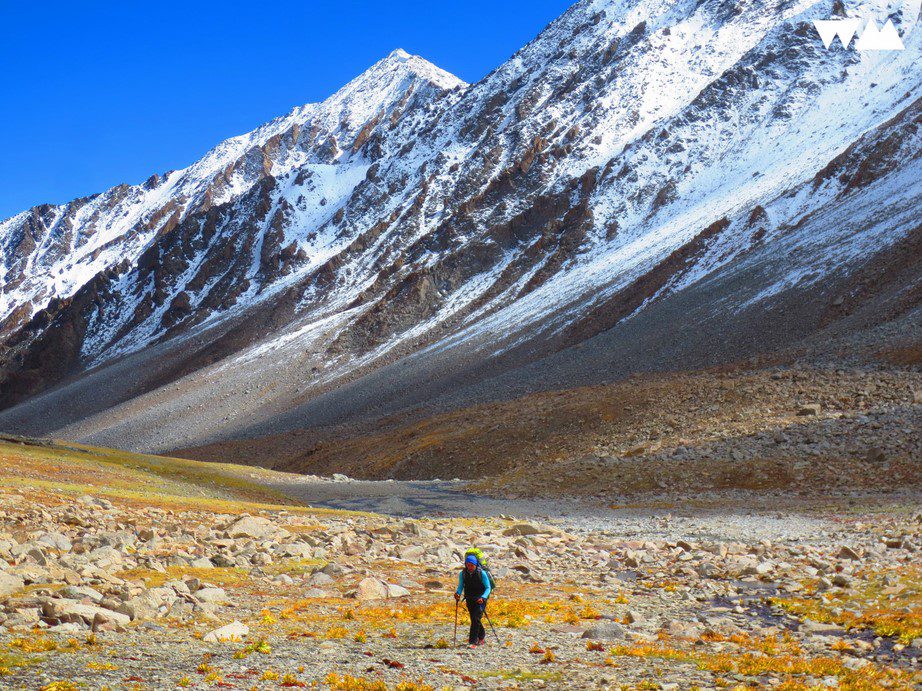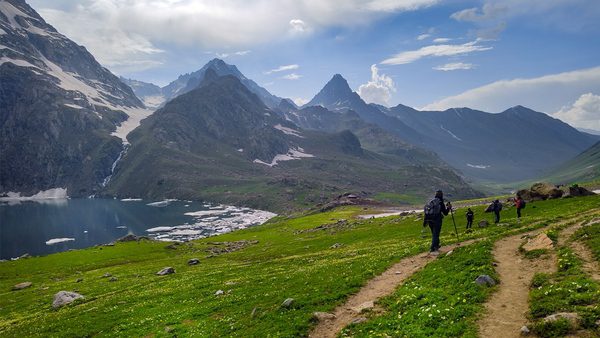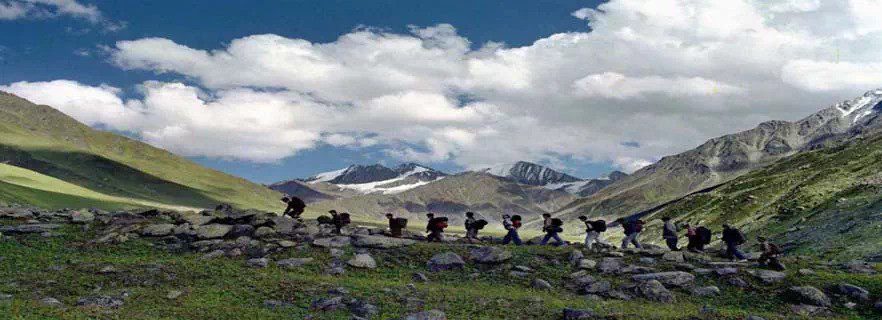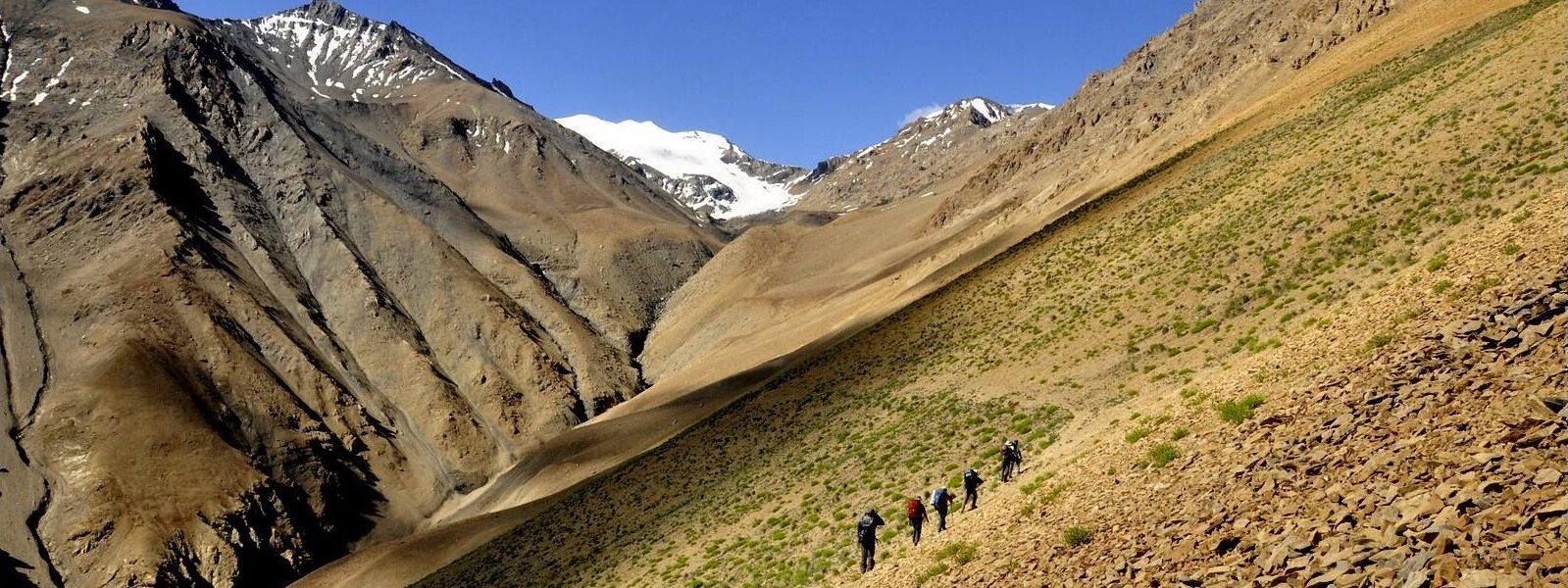High-altitude survival is crucial when trekking in Ladakh, a dream for many adventure enthusiasts. With its stunning landscapes, remote villages, and challenging high-altitude routes, it promises a once-in-a-lifetime experience. However, the extreme conditions at high altitudes pose unique challenges that trekkers need to prepare for. From battling low oxygen levels to surviving the cold, the risks of altitude sickness and other high-altitude effects make high-altitude survival knowledge essential before embarking on any trek in this region.
In this guide, we’ll walk you through everything you need to know about high-altitude survival in Ladakh, focusing on preparation, acclimatization, gear, and safety tips to help you have a safe and memorable adventure.
1. Why Is High-Altitude Survival Critical in Ladakh?
1.1 The Extreme Conditions of Ladakh’s High-Altitude Terrain
Ladakh is nestled in the Himalayas, with trekking routes often reaching elevations of 3,500 to over 5,000 meters (11,500 to 16,400 feet). At these heights, the oxygen levels at high altitude decrease significantly, making it harder for the body to function normally. As a result, the risk of altitude sickness rises, and your physical performance may decline.
For most trekkers, the higher you ascend, the more challenging it becomes to breathe, move, and recover. Even experienced trekkers must pay attention to these conditions because the challenges of high-altitude trekking can catch anyone off guard.
1.2 Understanding the Risks: Altitude Sickness and Its Impact
Altitude sickness, or Acute Mountain Sickness (AMS), is one of the most common risks when trekking in Ladakh. AMS typically occurs above 2,500 meters (8,200 feet) when the body cannot get enough oxygen due to the reduced air pressure. The symptoms of altitude sickness include:
- Headaches
- Nausea
- Dizziness
- Shortness of breath
- Fatigue
If left untreated, AMS can progress into more severe conditions like High Altitude Pulmonary Edema (HAPE) or High Altitude Cerebral Edema (HACE), both of which are life-threatening and require immediate descent and medical attention.
1.3 The Importance of Acclimatization in High-Altitude Regions
To minimize the risk of AMS and ensure a safe trek, acclimatization is crucial. This process allows your body to adjust to the reduced oxygen levels at higher altitudes. By taking gradual steps to acclimatize during a trek in Ladakh, you give your body the time it needs to adapt, reducing the chances of getting altitude sickness.
Key tips for acclimatization include:
- Ascend slowly, especially after reaching 3,000 meters (9,800 feet).
- Take rest days at higher elevations.
- Stay hydrated and eat well to maintain your energy levels.

2. Preparing for Your High-Altitude Trek in Ladakh
2.1 Physical Fitness: How to Train for High-Altitude Trekking
Trekking in Ladakh’s high-altitude terrain requires more than mental determination. Your body must be in peak physical condition to handle the challenges of high-altitude trekking. Preparing your body for the trek is essential, with a focus on building endurance, strength, and cardiovascular fitness.
Start training several months before your trip, incorporating activities such as:
- Hiking with a weighted backpack.
- Cardiovascular exercises like running, cycling, or swimming.
- Strength training, especially focusing on your legs, core, and lower back.
A well-prepared body will not only help you perform better on the trek but will also reduce the risk of fatigue and injury.
2.2 Essential Gear for High-Altitude Survival
Having the right gear is crucial for surviving in Ladakh’s high-altitude environment. The weather can be unpredictable, and temperatures can drop significantly, especially at night. Here’s a checklist of essential gear you’ll need:
| Gear | Purpose |
|---|---|
| Layered clothing | For temperature control and insulation |
| High-altitude boots | Designed for rocky, uneven terrain |
| Hydration system | To stay hydrated in dry, cold air |
| Portable oxygen canisters | For emergencies when oxygen levels drop |
| Trekking poles | For stability on steep ascents/descents |
| Sunglasses and sunscreen | Protection against UV rays at high altitudes |
These items are critical for high-altitude survival as they help you stay warm, protected, and prepared for any challenges along the trail.
2.3 Packing Smart: What to Bring for a Trek in Ladakh
Packing efficiently and light is key to enjoying a trek in Ladakh. While it’s tempting to overpack, too much gear can weigh you down, slowing your progress. Some items to prioritize include:
- High-energy snacks: Nuts, energy bars, and dried fruits to maintain energy levels.
- First-aid kit: Including bandages, antiseptic, and altitude sickness medication like Diamox.
- Water bottles or hydration packs: Staying hydrated is essential for preventing altitude sickness.
- Lightweight sleeping bag: Choose one rated for cold temperatures.
Plan your packing around high-altitude trekking essentials to ensure you have everything you need without carrying unnecessary weight.

3. Dealing with Altitude Sickness in Ladakh
3.1 How to Prevent Altitude Sickness
Preventing altitude sickness is a key component of high-altitude survival. Here are some proven strategies to help you avoid altitude-related issues:
- Hydration: Drink plenty of water to keep your body functioning well at high altitudes. Dehydration can worsen symptoms of AMS.
- Pacing: Move slowly and avoid overexertion. The mantra “climb high, sleep low” can help prevent altitude sickness.
- Altitude sickness medications: Consider taking medications like Diamox to help your body acclimatize faster.
By following these steps, you can minimize your risk of falling ill during your trek.
3.2 Recognizing Symptoms of Altitude Sickness
It’s essential to know the signs of altitude sickness and act quickly. Common symptoms of altitude sickness include:
- Persistent headaches
- Shortness of breath, even at rest
- Difficulty sleeping
- Loss of appetite
If symptoms worsen, descend immediately to a lower altitude to avoid more severe complications.
3.3 First Aid and Treatment for Altitude Sickness
If altitude sickness strikes, here’s what you should do:
- Immediate descent: Going down to a lower altitude is the fastest way to relieve symptoms.
- Supplemental oxygen: Use portable oxygen canisters to increase oxygen intake.
- Medication: Administer altitude sickness medication like Diamox as prescribed by a doctor.
In severe cases, seek emergency medical attention.
4. Acclimatization Techniques for Ladakh Treks
4.1 Gradual Acclimatization and Trekking Strategies
When trekking in Ladakh, gradual acclimatization is critical. Plan your route to include rest days at key intervals, allowing your body to adjust to the altitude before pushing higher. It’s also wise to pace your trekking to avoid straining your body too quickly.
Sample Acclimatization Itinerary:
- Day 1: Arrive in Leh (3,500 m) – Rest and hydrate.
- Day 2: Short acclimatization hike – Stay in Leh.
- Day 3: Begin trekking – Ascend gradually.
4.2 Monitoring Oxygen Levels and Using Supplemental Oxygen
Using a pulse oximeter to check your oxygen levels at high altitudes can be a lifesaver. If levels drop too low, it’s time to rest or consider using supplemental oxygen.
4.3 Breathing and Hydration Tips at High Altitudes
At higher altitudes, the air is dry, so staying hydrated is more important than ever. Drink water regularly and practice deep breathing techniques to improve oxygen intake. Breathing exercises can help you manage shortness of breath, allowing you to maintain steady progress during your trek.

5. Best Trekking Routes in Ladakh for High-Altitude Trekkers
5.1 Popular High-Altitude Trekking Routes in Ladakh
Ladakh offers numerous challenging and rewarding treks, including:
- Markha Valley Trek: Known for its stunning landscapes and cultural experiences.
- Chadar Trek: A winter trek on the frozen Zanskar River, offering extreme conditions and breathtaking views.
5.2 Ideal Seasons for Trekking in Ladakh
The best time to trek in Ladakh is from June to September. During these months, the weather is relatively mild, and the trekking routes are accessible.
5.3 Planning Your Trek: Permits and Logistics
Ensure you obtain the necessary trekking permits before embarking on your journey. Permits are required for many routes in Ladakh, and you may also need to hire local guides or porters depending on your chosen trek.
6. Survival Tips for Trekking in Ladakh’s High Altitudes
6.1 Dress for the Cold: Layering and Gear Recommendations
Layering is key when it comes to high-altitude survival. The temperature can change drastically throughout the day, so wear moisture-wicking base layers, insulated mid-layers, and windproof outer layers.
6.2 Managing Energy and Nutrition at High Altitudes
At high altitudes, your body burns more calories, so it’s essential to fuel up with high-calorie snacks and nutrient-dense meals. Opt for lightweight, energy-boosting foods like trail mix, energy bars, and dried fruits.
6.3 Emergency Survival Strategies in Extreme Conditions
If you find yourself in a survival situation, prioritize:
- Staying warm: Use emergency blankets or shelters.
- Signaling for help: Carry a whistle or flare for signaling.
- Conserving energy: Move slowly and rest when needed.
Conclusion
Trekking in Ladakh’s high altitudes is a thrilling and challenging adventure. However, with the right preparation, gear, and survival strategies, you can safely navigate the extreme conditions and enjoy everything Ladakh has to offer. Remember to acclimatize gradually, stay aware of the symptoms of altitude sickness, and pack smart to ensure a successful trek.

FAQs
1. What is the best way to prevent altitude sickness while trekking in Ladakh?
Gradual acclimatization, staying hydrated, and using medications like Diamox can help prevent altitude sickness during treks.
2. How do I prepare for high-altitude trekking in Ladakh?
Focus on building endurance, strength, and cardio fitness. Proper gear and acclimatization are also key to preparing for high-altitude treks.
3. What should I pack for a high-altitude trek in Ladakh?
Essentials include layered clothing, trekking poles, a hydration system, portable oxygen, and high-energy snacks.
4. When is the best time to trek in Ladakh?
The best time to trek in Ladakh is during the summer months, from June to September, when the weather is more predictable.
5. What are the common symptoms of altitude sickness?
Common symptoms include headaches, nausea, dizziness, shortness of breath, and difficulty sleeping.
6. Is trekking in Ladakh safe for beginners?
While Ladakh’s high altitudes can be challenging, some treks are suitable for beginners with proper preparation and acclimatization.









